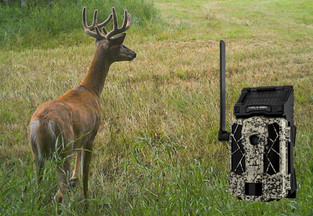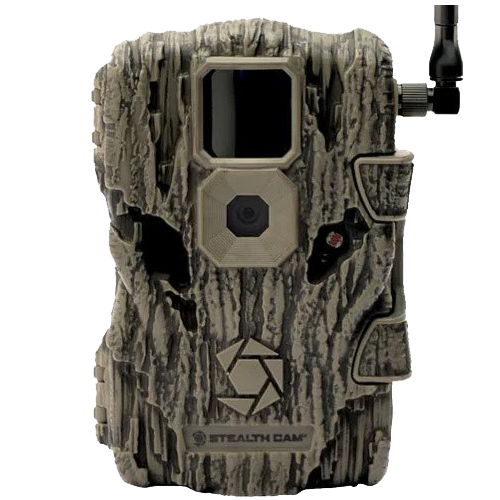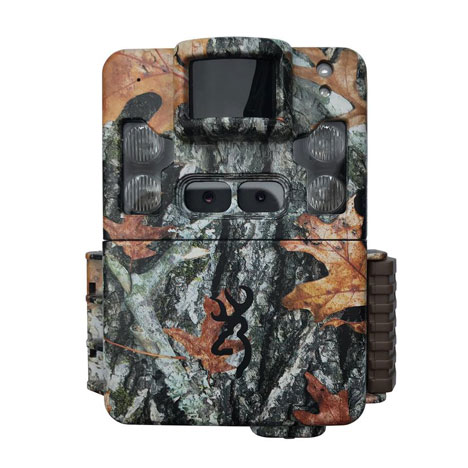Posted by Quinn on Dec 31st 1969
Scouting Trail Camera Buyers Guide - Nexgen Outfitters
If you spend enough time in a ground blind or tree stand, you’ll eventually catch yourself wondering if there are any mature deer, or maybe even ANY deer, in the area. Employ the use of trail cameras (also referred to as game cameras, or scouting cameras) to not only significantly increase your patience level during a sit, but also help narrow down the best times for an active sit. Or maybe you want to rank the bucks in your area and wait for the bruiser on top of the list before taking any other deer from a certain stand or blind. Just like so many types of electronics, the technology is advancing rapidly, and the product specs can be confusing. It really boils down to the basic idea of detecting something that you want to take a picture of, and then capturing that picture all while you are not actually present. We’ll break down a few of the most important game camera operations here, but if you’re not into the tech talk just skip right down to the staff picks.
PIR DETECTOR
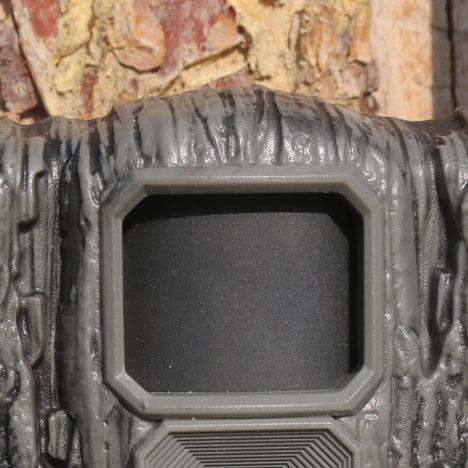
Scouting cameras use what is called a PIR sensor to detect the presence of both motion and temperature change (heat) to tell the camera there’s something to capture. The PIR sensor stands for Passive Infrared sensor, and in simple terms works like this. The area covered by the detector extends out from the camera in a cone shape, which is referred to as the detection zone. The infrared sensor works behind a Fresnel lens (the dark colored curved piece of plastic actually covering the PIR sensor) array to monitor the infrared heat within that zone, and a person or animal moving through the zone will create (although very small) an infrared temperature change. The construction and sensitivity of the PIR sensor will dictate camera attributes like detection range, detection angle and how accurately it detects temperature changes that are the actual result of an animal in the zone. Bigger animals like people and deer obviously create the biggest change which works well since that’s typically what a person is attempting to photograph. Some cameras will employ an adjustable PIR circuit to allow a user to tailor the sensitivity to their specific scenario. Capturing the foxes disturbing your chicken coupe requires more sensitivity than an elk meandering down a trail.
TRIGGER SPEED
Trigger speed and recovery time are two of the most common characteristics advertised about most cameras. These terms seem fairly self-explanatory, but we find what is really happening during a “trigger” pretty amazing. Trigger speed is commonly defined in the trail camera industry as the time between the PIR sensor detecting its change in infrared heat and when the image (or video) is captured by the image sensor. This is not the same at shutter speed, which is simply the amount of time that the image sensor is soaking up light (the digital version of exposing grandpa’s old 35mm film to the light). During a trigger, the camera’s software is calculating all kinds of vital photography information. How much light is available, or does it need to generate a flash? How much exposure (although done digitally, still the fundamental aspect of photography) and for how long will create the best image? Focus! And so on.
Think about your phone in your pocket while in the blind, and a deer walks by. Trigger is the comparable process to getting the phone out, “waking up” the camera, finding the area of the image to focus on, rotating the little sunshine icon on the screen if necessary and finally tapping the red button. And next thing you know, the deer is out of the picture. So, all of that coming together in less than 2 TENTHS of a second from the fastest scouting cameras is arguably where the most sophisticated tech engineering is at play. Follow the trigger with the recovery time, which is the amount of time before the whole process can start over again.
IMAGE CAPTURE
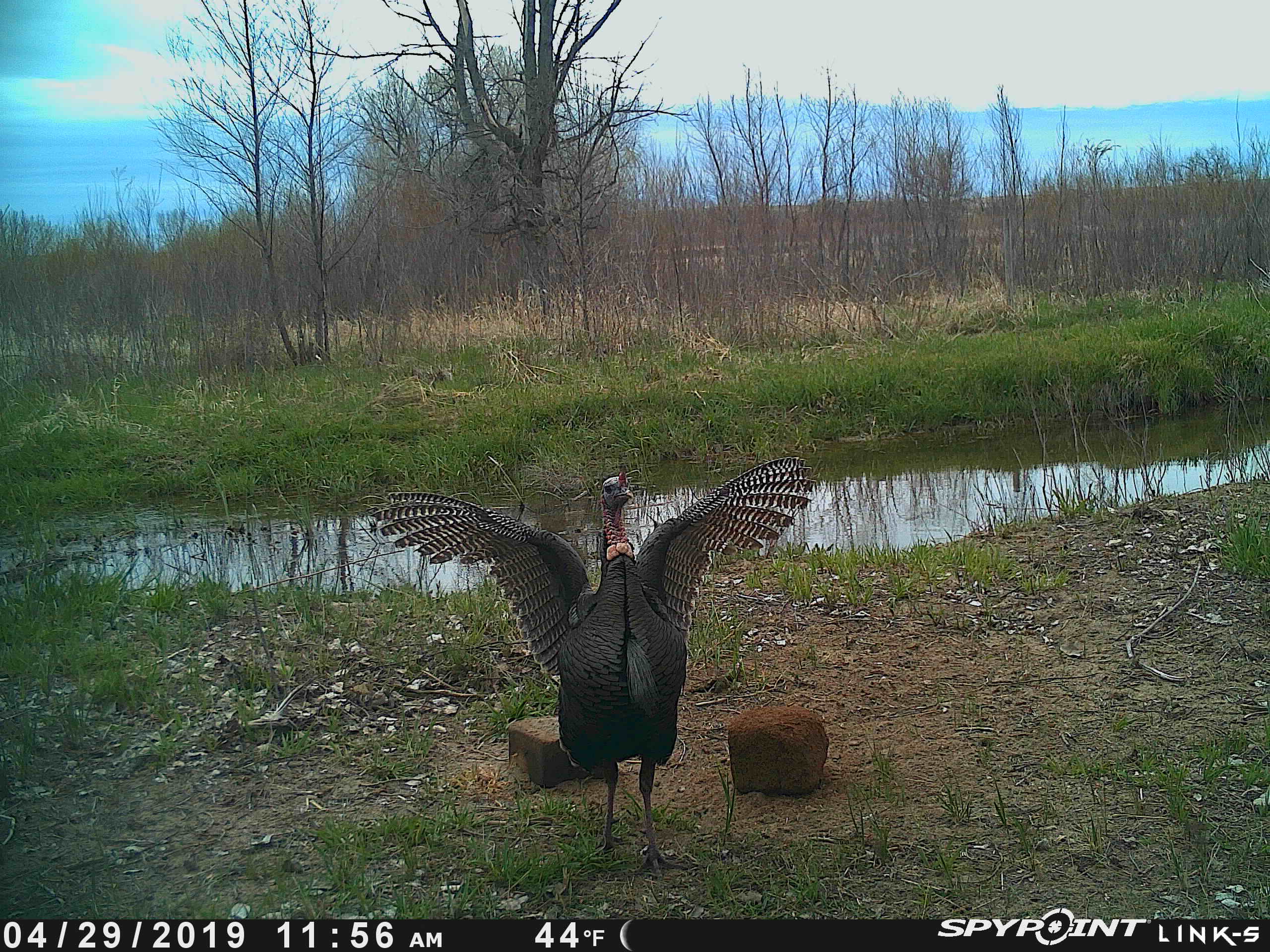
Once the trigger initiates the image capture, it is up to the lens and image sensor to take the picture. The lens is actually several pieces of glass called elements that work together to minimize any defects that using a single piece of glass would cause. A key aspect of the lens is the field of view (different from the detection zone) that it will capture. The best designers pay close attention to the field of view in conjunction with the detection zone to prevent perceived false triggers, a.k.a. empty photos. With a really fast trigger the detection zone and lens’ field of view can be close to the same size, since a picture will be taken quickly once an animal is detected. For a slower trigger, the detection zone may need to be quite a bit larger than the field of view leaving the animal time to move into frame after detection.
The digital version of old-style film, the image sensor sits at the back of the camera and collects all the tiny pieces of light information that make up an image. Or in the case of video, it captures information a specific number of times each second which is stitched together for smooth video. More frames per second results in smoother video and the ability to freeze frames at exactly the right moment.
Many cameras offer a photo burst to help with moving subjects. So instead of the trigger initiating one photo, the camera will capture multiple photos in rapid succession with all the same “settings” that were calculated during the trigger. The quickest cameras can take up to nine pictures at once, leaving a lot of options to find the image that best captured the detail a hunter is after.
MEGAPIXELS & INTERPOLATION
One of the biggest mis-conceptions of trail cameras is the way they produce images with large megapixel resolutions. Even entry level cameras will start at 10MP images and extend up to 30MP or more in a high-end camera. However, the image sensors are the most expensive components in the construction of game cameras, and so typically range from 1.6MP to 3.2MP and maybe up to 4.5MP in the most expensive units. So, how does the camera produce 10, 20, 30, or more MP images?
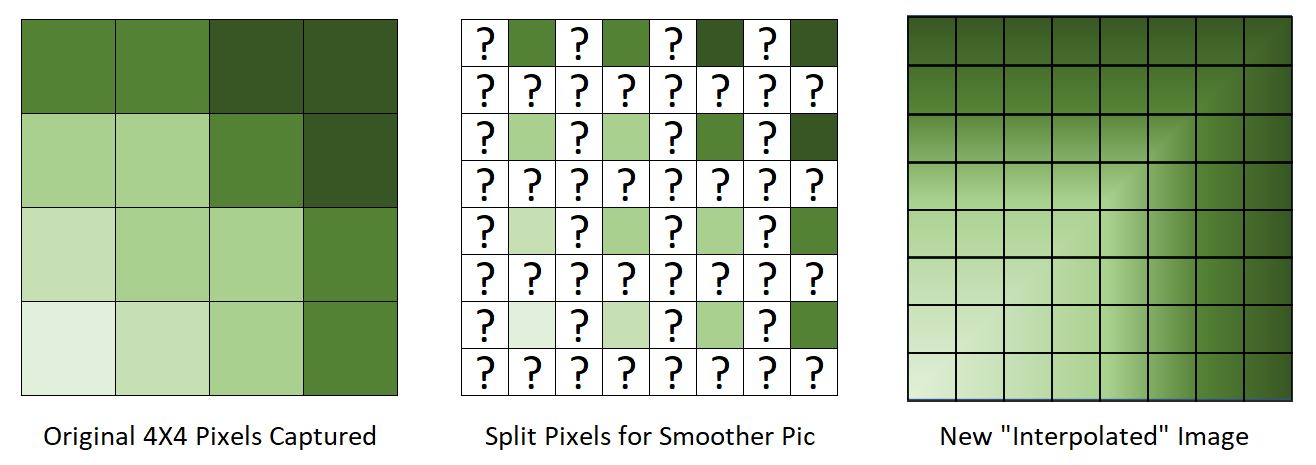
It helps to understand that a 1-megapixel photo means there are 1 million tiny squares per square inch or a 1,000 x 1,000 grid in every square inch of that photo. Through a process called interpolation each of those tiny squares are split into even tinier squares where a computer program calculates the color for each of those new smaller squares based on the original color plus “observing” the colors that were around it. The super simple graphic above splits a 4x4 pixel grid into a 16x16 pixel grid for an illustration of interpolation. So, by splitting the original grid to 2,000 x 2,000 there are now 4 million tiny squares per square inch resulting in a 4MP resolution image created from our original 1MP image that was captured by the image sensor. Now if you’re like 99.9% of hunters, you just want to know how clearly the camera will produce images of whitetail buck antlers regardless of all this image sensor and interpolation algorithm techy “stuff”. Which even for the techy guy is truly the right way to evaluate image quality of a game camera. We try to include an example photo for most scouting cameras on our site.
FLASH TYPES
Closer to your hunting season the goal will be to see which and how many deer are active during the daylight. But during the prime scouting (and horn growing) season, the cruisers you’re most interested in are almost exclusively nocturnal. So, how the camera is producing enough artificial light to capture night time images is one of the most important components. There are three flash types employed by camera makers:
NO-GLOW
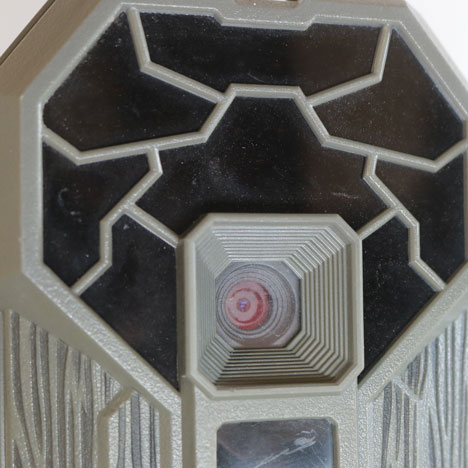
No-Glow flash scouting cameras are also known as “black-flash” or “invisible flash” and produce infrared light. Scientifically, these flashes are emitting infrared light with a wavelength around 940nm which is well above the visible spectrum. Many of these type cameras will have dark colored filters covering the bank of LED bulbs to ensure only the desired light is emitted. The flash works in tandem with both the detection sensor and image sensor to still capture a quality image. Nighttime photos from a no-glow flash camera will only be in black and white, and the range of this type of flash will be smaller than the other flash types. However, since undetectable to animals or people the camera can be set-up much closer to your desired coverage area. Invisible cameras like this also effectively serve security purposes.
LOW-GLOW
Similar to no-glow flashes, the low-glow (or “red flash”) flash also uses infrared light that is right on the edge of the visible spectrum (around 850nm) to capture an image in the dark. Also producing a black and white image, cameras with a low-glow type flash are a good alternative to paying for a more expensive invisible flash while remaining mostly undetected.
WHITE FLASH
Full flash units are simply those with the bright burst of white light that we’re all familiar with. While this type has the greatest range and will produce full color pictures in the dark, they are seldom used anymore. Since the goal of a scouting camera is to discretely capture valuable information about its subject, a sudden burst of light spooking all the animals in the area has all but been abandoned in trail camera design.
POWER SUPPLY
Given all the operations of your camera reviewed so far, it is no surprise that they consume a significant amount of batter power. Forget about using std alkaline batteries in most units if you want any decent battery life. Most will run effectively for a month or so on 8 good lithium batteries, with a few power hogs requiring up to 12 “AA” batteries and the most efficient able to use only 6 double “A”s. Most manufacturers are now offering models with integrated solar panel chargers to drastically lengthen battery life. Solar power has been a giant step toward setting a camera to monitor really remote locations, or an area that you wish to leave undisturbed for extended periods.
STORAGE & RETRIEVAL
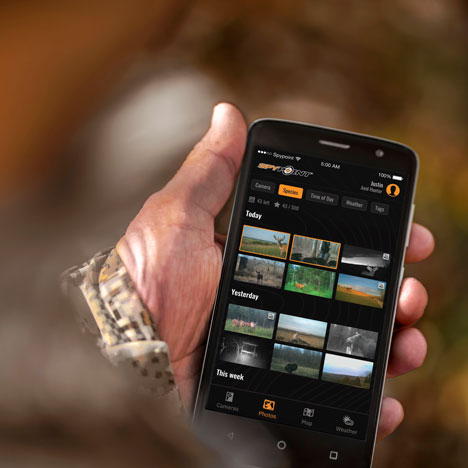
When it comes to storage and retrieval of all that valuable scouting information from your game camera, the improved availability of affordable cellular products has made it easier than ever to monitor your deer herd. Actually what we found as somewhat of a hidden benefit to cellular game cameras, is the accompanying software application (smart phone app). Each trail cam brand has their own app to not only help organize and sort all the images transferred from the camera, but usually to also operate and change settings of the camera remotely. Data plans to fetch your photos are reasonably priced and all the best brands have plenty of options to bulk up on transmitted pictures in the peak of your research yet scale back or even shut down completely out of season. Each app is however specific to the brand, meaning if you have Spypoint and Stealth Cam units you’ll also need each brand’s application. So, do some homework on the features from each maker and how that fits with your specific scouting needs. It’s also important to note that our experience is that it takes three bars of 4G service to reliably get images from a cellular device.
Standard storage cameras are certainly more economical if placement will be in an area that you frequent and are not worried about your presence deterring the wildlife activity. Choose quality SD (or MicroSD) cards like those offered from each brand which are built to handle the temperature variations this equipment will go through better than the cheap card you’d be inclined pop in a digital camera. The size of card really depends on if it’s primarily storing stills or video clips and the resolution that’s being captured. Most cameras have a maximum card size so just be sure not to exceed that limit. As a gauge a 16GB card will hold ~4,600 10MP images OR ~2 hours of 1080p video (shot @ 30 frames/second). Using an arsenal of standard storage trail cameras does also allow a hunter to easily tailor the brand and models used around the property for each specific scouting need.
SET UP
Obviously like most electronics, careful scrutiny can be applied to all the components listed to this point but if usability is poor, none of that will matter. Control methods will commonly be via a smart phone app only, a small B&W LCD screen with navigation buttons in the camera housing, or on high end models a full color screen with advanced controls. Don’t pick more function than the situation dictates. If you’re trying to capture stunning wildlife photos, then you’ll need more camera and more control than simply tracking the presence and movement of “shooter” bucks in the area.
STAFF PICKS
Quinn: Stealth Cam Fusion X for Verizon
“These cameras are a snap to set up with the scan of a QR code. Like a lot of electronics, by the time it’s made, shipped, purchased, and ready for use the software already needs updated, but the best part of a Stealth Cam is that it will update firmware (that’s the software running it) over the air. Others require the update is put on a memory card then inserted into the camera, but not these. Image quality is fine and actually instead of the full 26MP advertised, mine are set to 8MP for easier transmitting and/or card storage – I’m really just interested in when and how often animals are moving. I scout mostly trails instead of establishing a picture trap with food because I want to know more about the natural movement around the property. The trigger is fast enough to catch a good pic even when they’re just walking by, and even though these are not true invisible flash I’ve never had trouble with spooked animals. One of the coolest features is that it captures audio so you can hear the elk bugling. The COMMAND app is easy to navigate, sort pics and monitor the camera”
Mike: Spypoint Link Micro Solar for Verizon
“My family’s schedule just doesn’t allow us to spend time scouting our hunting ground in person anymore, so I needed a camera I could set and forget. Initial set-up did require a system update but was no big deal and didn’t take much time; I would tell people to NOT skip that step. As of today, these two cameras have been out and sending pictures for 10 months and with the solar panel they’re still both over 60% battery level. There’s no screens or buttons on the camera so everything is managed via the Spypoint APP, but it works great and with less buttons on the camera there’s less to go wrong. I’m set up around food and water, so I don’t have to worry too much about catching fast moving animals, although the trigger is pretty fast. I’ve been running and designing cameras for a lot of years and I am amazed at the image clarity coming out of what I would consider and entry level camera.”
Dan: Bushnell Prime L20 Standard Camera
“I’ve been running Bushnell cameras for quite a while and going to update a couple older Trophy models to the New Prime L20. I scout from about mid-summer through archery season and don’t mind driving out to pick up a camera card with that little bit of suspense that builds wondering what has been captured. In season it’s easy enough to pop the card into a reader and see what’s been cruising around the area. Bushnell has a rep for easy set-up and great battery life, plus they only use 6 double As instead of the 8 or even 12 of other brands, so I really do get a full season of scouting on 6 batteries. I think the night time pictures from the ol’ Trophy models are as good or better than the guys’ that have spend 3x more, and I don’t know why the new Prime series will be any different.”
Trent: Browning Strike Force Pro XD
“Browning was one of the first and best in this game and with roots in hunting and shooting they know what consumers are after. We place a couple Command Ops models around the property but have gone to the Strike Force Pro XD camera over the most active food plot. The biggest challenge I’ve always felt with game cams is they seem to take good pics EITHER in daylight OR at night, but not both. Browning designers employ two lenses and image sensors on the XD models, with one triggered during the day and the other in the dark. So, if you have a hot spot with a lot of activity and want to be able to sort a 150 incher from a 160 this will give you clear enough images to do that. These also operate on only 6 AA batteries for a couple months, which is more than enough to last between visits in the peak scouting season”.
Be sure to check out these scouting cameras and many more on our trail cam page, and if at any time you need some more guidance on your selection don’t hesitate to contact us.

